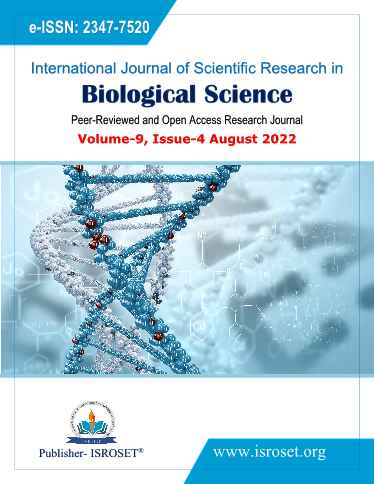Effect of Substitution of Kaopi and Anchovy Flour Based on The Nutritional Values, Organoleptic, and Total Microbe of ‘Kasuami/kasoami’
Keywords:
Kasuami, Anchovy flour, Nutritional valueAbstract
These low contents demand necessary to conduct substitution using anchovy flour (Stolephorus comesonii) since it has a quite complete nutritional content, such as fat, protein, and carbohydrates. This research was carried out aiming to discover the effect of substitution between kaopi flour and anchovy flour on the nutritional content of kasuami/kasoami and the appropriate ratio of kaopi flour and anchovy flour proportions for a good kasuami/kasoami products in terms of color, aroma, and taste based on organoleptic tests and microbial growth. This study employed a completely randomized design with 6 treatment levels and 3 replications. The treatment levels were done on the proportion of kaopi flour and anchovy flour (S. comersonii), in which the ratio iwasT0 (100%:0%). T1 (98%:2%). T2 (96%:4%). T3 (94%:6%). T4 (92%:8%). and T5 (90%:10%). The best kasuami/kasoami was obtained from the substitution of kaopi flour using anchovy flour by 90% kaopi: 10% anchovy flour (T5). The results of kasuami/kasoami chemical test based on the best treatment provided indicated that the substitution of kaopi flour using anchovy flour significantly affected the variables of moisture content (47.57%). protein content (16.40%). fat content (3.48%). carbohydrate content (28.86), and total microbes (202.33 x 10-2 cfu). Meanwhile, based on the organoleptic test, the average preference values for color was 4.47 (preferred), the aroma was 5.40 (preferred), and the taste was 6.13 (preferred). This research data indicate that anchovy flour as a substitute for kaopi flour in producing kasuami/kasoami significantly affected the chemical composition variables.
References
I.U. Odoemenem, and L.B. Otanwa, “Economic Analysis of Cassava Production in Benue State, Nigeria,” Current Research Journal of Social Sciences, Vol. 3, No.5, pp.406-411, 2011.
Wardana, and Muzuna, “Studi Pengembangan dan Pemasaran Kasoami Di Kelurahan Wanci Kecamatan Wangi-Wangi Kabupaten Wakatobi,” Media Agribisnis, Vol. 4, No.1, pp.46-53, 2000.
Wijanarko, and D. Dini, “Uji Kadar Lemak pada Kasoami dengan Beberapa Perlakuan,” Prosiding Seminar Nasional Kemandirian Pangan, UNPAD- BPTP Jawa Barat-DRD Provinsi Jawa Barat, 2012.
S. Herni, Tamrin, and N. Asyik, “Penilaian Organoleptik serta Proksimat Biskuit Tinggi Serat Berbasis Tepung Kaopi Fermentasi dan Ampas Kelapa,” Journal Sains Dan Teknologi Pangan, Vol. 3, No.3, pp. 1379-1392, 2018.
M.N. Faroj, “Pengaruh Substitusi Tepung Ikan Teri (Stolephorus commersonii) dan Tepung Kacang Merah (Vigna angularis) terhadap Daya Terima dan Kandungan Protein Pie Mini,” Jurnal Media Gizi Indonesia, Vol. 4, No.1, pp. 56-65, 2019.
D. Ratnasari, and Y.D. Rahmawati, “Karakteristik Sifat Organoleptik dan Nilai Gizi pada Biskuit Tepung Ikan Teri (Stolephorus spp.) dan Isolat Protein Kedelai,” Jurnal Pendidikan Tambusai, Vol. 6, No.2, pp. 10590-10595, 2022.
P.T. Akonor, A. Atter, M. Owusu, J. Ampah, A. Andoh-Odoom, R. Overå, M. Kjellevold, J. Pucher, J. Kolding, “Anchovy Powder Enrichment in Brown Rice-Based Instant Cereal: A Process Optimization Study using Response Surface Methodology (RSM),” Food Sci Nutr, Vol. 9, No.8, pp. 4484-4496, 2021.
Association of Official Analytical Chemist (AOAC), “Official Methods 960.38 Benzoic Acid in Nonsolid Food and Beverages Spectrophotometric Method,” USA: AOAC International, 2000.
L. Qiu, M. Zhang, J. Tang, B. Adhikari, P. Cao, “Innovative Technologies for Producing and Preserving Intermediate Moisture Foods: A Review,” Food Research International, Vol. 116, No.1, pp.90–102, 2019.
A.Y. Habsy, “Pengaruh Substitusi Tepung Teri (Stolephorus sp.) terhadap Daya Patah, Kandungan Zat Gizi (Karbohidrat, Protein, Lemak, Kadar Air), dan Mutu Organoleptik pada Produk Mie Instan [thesis],” Universitas Brawijaya, Malang, 2013.
M. Ali, E. Efendi, and N.M. Noor, “Products Processing of Anchovies (Stolephorus sp.) and Its Waste Potential as Raw Material for Feed in Implementing Zewo Waste Concept,” Jurnal Perikanan, Vol. 8, No.1, pp.47-54, 2018.
F. Swastawati, P.H. Riyadi, H. Sulistyaningrum, S. Resky, S. Suharto, “Comparison of Macro Nutritional Value, Dissolved Protein, Amino Acids and Minerals of Fresh and Crispy Product of Anchovy (Stolephorus commersonnii),” Sys Rev Pharm, Vol. 11, No.9, pp.424-430, 2020.
L.C. Asmoro, “Karakteristik Organoleptik Biskuit dengan Penambahan Tepung Ikan Teri Nasi (Stolephorus sp.) [thesis],” Universitas Brawijaya, Malang, 2013.
T.K.B Hendrayati, Dewi, and L. Budyghifari, A. Adam, “Proximate Characteristics and Nutritional Value of White Anchovy Flour. Medico Legal Update, Vol. 20, No.3, pp.744-749, 2020.
F.G. Winarno, “Kimia Pangan dan Gizi Edisi Kesebelas,”PT Gramedia Pustaka Utama, Indonesia, pp. 96-127, 2004.
J.M. de Man, “Principles of Food Chemistry,” As aspen publication, USA, pp. 163-183, 1999.
R. Maio, J. García-Díez, and C. Saraiva, “Microbiological Quality of Foodstuffs Sold on Expiry Date at Retail in Portugal: A Preliminary Study,” Foods, Vol. 9, No.7, pp.1-12, 2020.
I. Zaki, and N. Rustanti, “Pengaruh Lama Penyimpanan terhadap Kualitas Mikrobiologi Biskuit Bayi dengan Tepung Labu Kuning (Cucurbita moschata) dan Tepung Ikan Patin (Pangasius spp.) sebagai MP-ASI. Artikel,” Fakultas Kedokteran, Universitas Diponegoro. Semarang, 2011.
Downloads
Published
How to Cite
Issue
Section
License

This work is licensed under a Creative Commons Attribution 4.0 International License.
Authors contributing to this journal agree to publish their articles under the Creative Commons Attribution 4.0 International License, allowing third parties to share their work (copy, distribute, transmit) and to adapt it, under the condition that the authors are given credit and that in the event of reuse or distribution, the terms of this license are made clear.







